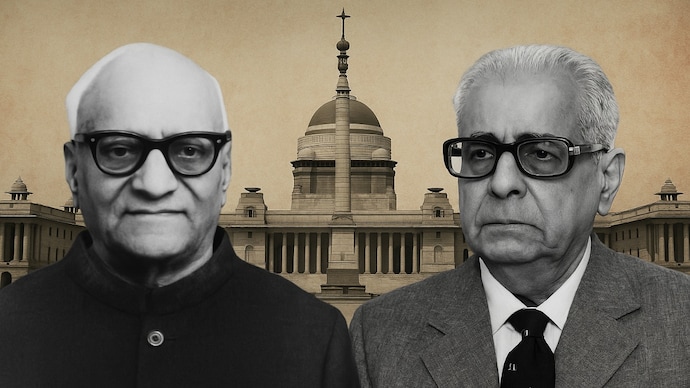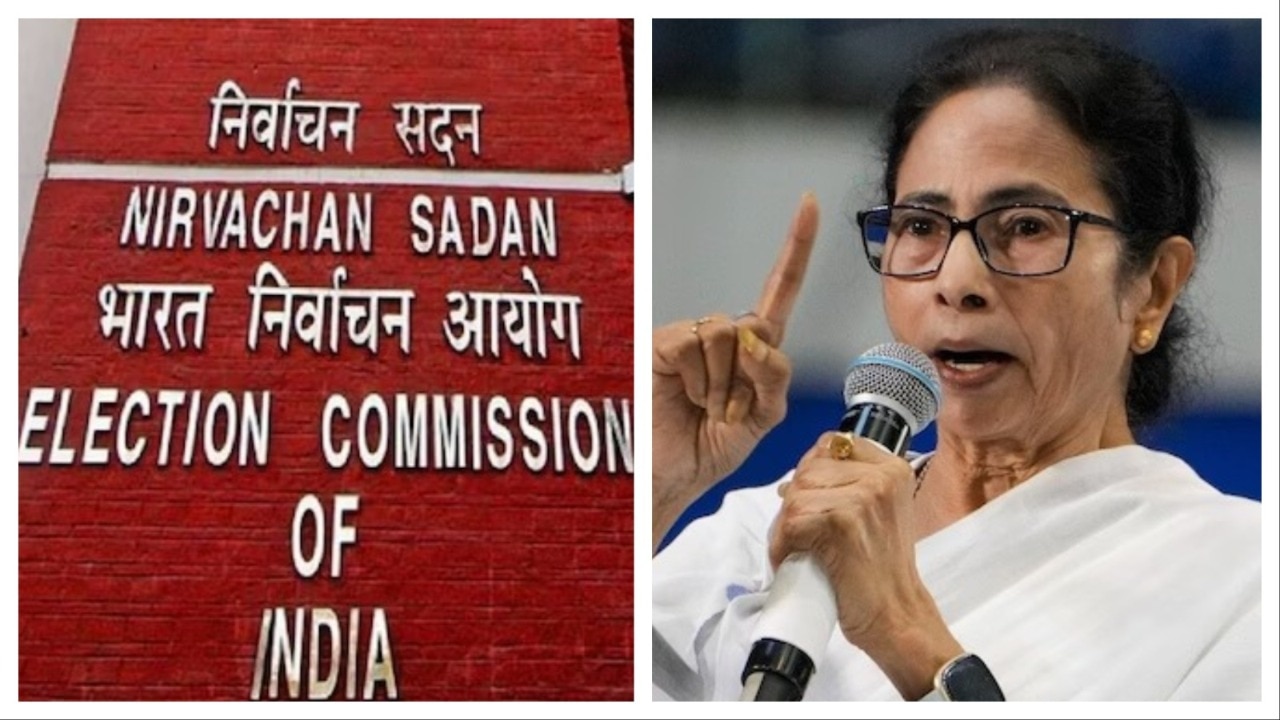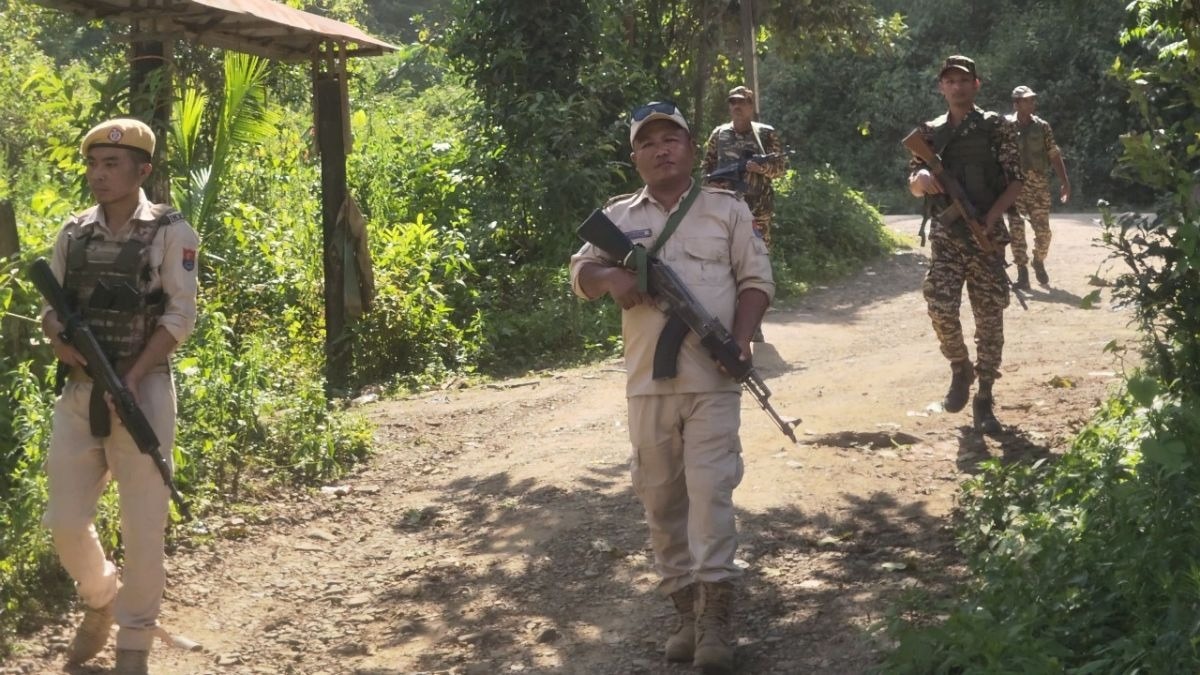ARTICLE AD BOX
In 1969, Vice-President VV Giri's resignation to run for the President's post, after President Zakir Hussain's death, created a rare situation. With both top offices vacant, Chief Justice of India, M Hidayatullah, had to step in as the acting President for over a month. The CJI, as the acting President, also hosted US President Nixon.

Justice Mohammad Hidayatullah (R) served as Acting President of India in 1969 after Vice-President VV Giri resigned mid-term to contest the presidential election. (File Images/India Today edit)
Fifty-six years before Jagdeep Dhankhar's surprising resignation from the post of Vice-President on Monday, India witnessed the first resignation of a Vice-President in 1969. But far from the intrigue in the Dhankhar case, the 1969 resignation was forced by circumstances and eventually resulted in the Chief Justice of India (CJI) taking charge of the Republic as the President of India.
After the sudden death of President Zakir Husain in May 1969, Vice-President VV Giri stepped down from his post to run for the President's office.
This led to the young Republic facing a unique situation, where Giri's resignation to run for the President's post resulted in the CJI, Mohammad Hidayatullah, taking charge as the President. His tenure lasted a month, until VV Giri was elected and sworn in as the full-time President of India.
For over a month, the CJI was the acting President of India, and even hosted then US President Richard Nixon at the Rashtrapati Bhavan.
Jagdeep Dhankhar's resignation on Monday, citing health reasons, makes him the fourth Vice-President to quit without completing his 5-year term. While Dhankhar's case is exceptional, the others quit to run for the President's office.
Other than Giri, Ramaswamy Venkataraman (1987) and Shankar Dayal Sharma (1992) were the other two who quit mid-term and contested presidential elections.
Dhankhar's resignation provides an opportunity to revisit the VV Giri chapter and examine how the CJI became the acting president.
Under Article 67(a) of the Indian Constitution, a Vice-President may resign by submitting a written notice to the President, effective immediately upon acceptance. In the absence of a Vice-President, the Deputy Chairman of the Rajya Sabha assumes interim duties, while the Chief Justice of India (CJI) may act as President if both offices are vacant, as outlined in the President (Discharge of Functions) Act, 1969.
It's these provisions that enable transitions in India's top leadership to take place smoothly, in accordance with the laws.
DEATH OF AN INDIAN PRESIDENT, AND A FRACTURED CONGRESS
On May 3, 1969, President Zakir Husain, who had been the Vice-President between 1962-1967, died in office. A constitutional crisis was created.
As India's third President, Husain was a respected figure, and his passing left the presidency vacant.
At the time, the Congress party was grappling with internal divisions.
The party was split between the old guard, known as the Syndicate, and the faction led by then-Prime Minister Indira Gandhi.
This rift set the stage for the contentious presidential election of 1969.
Vice-President VV Giri, who had been serving as acting President following Husain's death, emerged as a key figure in the unfolding political drama.
The Congress faced pressure to select a candidate who could have the support and unify the factions. But the divide between the Syndicate (namely the Congress Organisation) and Gandhi's supporters Congress (Requisitionists) made consensus elusive.
A PRESIDENTIAL BID IN INDIA LIKE NO OTHER; VV GIRI WON BY A NARROW MARGIN
The Syndicate, a group of senior Congress leaders, including K Kamaraj and Morarji Desai, sought to assert control over the presidential succession.
They favoured Neelam Sanjiva Reddy as their candidate, believing he would align with their conservative faction. Meanwhile, Indira Gandhi, pushing for greater influence within the party, backed VV Giri, who was seen as more sympathetic to her policies.
To pursue the presidency, Giri, acting as the President, resigned as the Vice-President on May 13, 1969. The move was an unprecedented one as no Vice-President had resigned.
The election became a battleground for control of the Congress Party. Giri, running as an independent candidate with Gandhi's support, faced Reddy. Gandhi called for a "conscience vote", allowing Congress MPs to vote freely.
Giri won the election in August 1969, by a narrow margin. He secured 4,20,077 votes against Reddy's 4,05,427, becoming India's fourth President.
WHEN CJI WELCOMED US PRESIDENT NIXON, AS A PRESIDENT
With both the presidency and vice-presidency vacant after Giri's resignation, an interim arrangement was required. From May to August 1969, the Vice-President's post remained vacant for more than 100 days.
The President's role, temporarily assumed by Vice-President VV Giri in May, came to an end in July after he resigned, having discharged the duties of both offices for over two months.
It was then, based on the provisions of the Constitution and the President (Discharge of Functions) Act, 1969, enacted just before this crisis, the Chief Justice of India acted as the President.
Accordingly, Chief Justice of India Mohammad Hidayatullah assumed the role of acting President from July 20, until Giri's inauguration on August 24.
Hidayatullah's tenure as the acting President became historic when he hosted US President Richard Nixon during his official visit to India. He even delivered a formal address at Rashtrapati Bhavan's Banquet Hall, according to the American Presidential Project, a digital archive maintained by the University of California.
After a short tenure of a month, as Article 62 of the Constitution mandates that a presidential election must be held within six months of a vacancy, Hidayatullah's stint came to an end after Giri took the oath of India's highest office on August 24.
After becoming a full-time Vice-President, Hidayatullah went on to act as President thrice in the 1980s during President Zail Singh's foreign visits.
Now part of post-Independence lore, this precedent gains some renewed relevance in 2025. However, now, Dhankhar's resignation has paved the way for an election to fill the Vice-President's post in six months.
- Ends
Published By:
Sushim Mukul
Published On:
Jul 22, 2025



.png)
.png)
.png)
















 7 hours ago
5
7 hours ago
5







 English (US) ·
English (US) ·